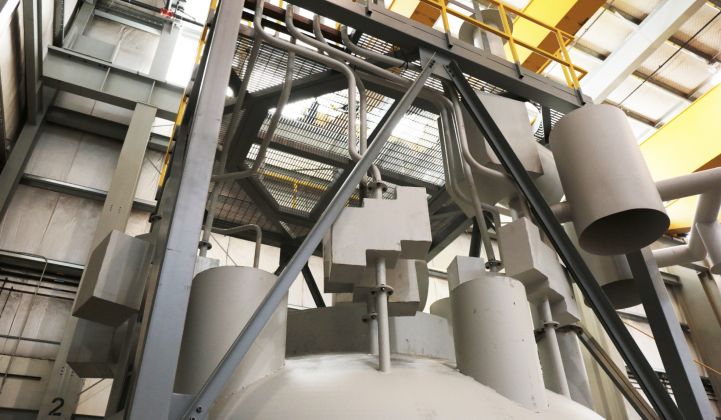In today’s Washington, it’s easy to get discouraged. Partisan rancor has reached record levels, and even within the GOP there are deep divides between the president and different factions of congressional Republicans on healthcare and tax reform.
What has emerged in Washington is a tri-partisan system: The Trump administration is carving out its set of positions, which differs not only from Democrats, but also, in many instances, from the stances of congressional Republicans.
The result has been even more dysfunction than usual, as the Republicans controlling the White House and Congress have been unable to agree on how to move forward.
But there is a small, and rare, glimmer of hope amidst this three-dimensional gridlock: support for advanced nuclear reactors.
Like today’s nuclear plants, advanced reactors will provide reliable, zero-carbon power. But they’ll also offer customers additional features, like flexibility in size and capacity (down to as low as 2 megawatts), new approaches to safety, economies of scale, and the flexibility to balance variable renewables and offer both power and heat for industrial processes.
Currently in the research and development phase, the first advanced nuclear plant, designed by NuScale, is slated to go on-line around 2025. And this suite of technologies already has garnered support across the political spectrum, from the right to the left to…well, to the Trump White House.
Congress is moving a series of bills that would promote the commercialization of advanced nuclear reactor designs through enhanced research and development support, a new licensing framework at the Nuclear Regulatory Commission (NRC), and improvements to an existing tax credit for advanced nuclear.
All of these bills have bipartisan backing, and each has made significant progress toward passage. Most recently, a tax credit bill with 32 cosponsors from both parties passed the House of Representatives.
Even our generally contrarian president is joining the crowd when it comes to advanced nuclear. The Trump administration released a statement in June saying that the president would sign the tax bill into law if it comes to his desk, noting that nuclear power is “critical to the reliability, security, and diversity of our national energy mix.”
As a part of the White House’s Energy Week, Trump highlighted nuclear energy research as a national priority and announced the launch of a comprehensive study of the industry’s needs. Additionally, the Department of Energy announced a nearly $67 million investment in nuclear energy research, facility access, technology development, and infrastructure. Energy Secretary Rick Perry has declared he wants to “make nuclear cool again.” Advanced reactors are the way forward.
Advanced nuclear has managed to avoid the morass of D.C.’s three antagonistic forces. That’s probably because it offers each faction at least one reason to be excited -- whether it’s domestic manufacturing, high-tech jobs, export potential, emissions reduction, energy mix, global influence, national security, or a host of other opportunities.
And because Washington only recently became familiar with these technologies, advanced reactors don’t carry quite as much political baggage as oil and gas, renewables, conventional nuclear, coal, and other “regulars” inside the Beltway.
Of course, while all three factions might be singing "Kumbaya" around advanced nuclear at the moment, some parts still are a bit out of tune.
Trump's budget proposal would reduce vital nuclear innovation funding at the Department of Energy; some Democrats are opposing efforts to modernize NRC licensing until long-running disputes on waste storage are completely settled; and most Republicans continue to block climate policies that could give a leg-up to zero-carbon energy sources like advanced nuclear.
Still, compared to the screeching cacophony of most policy debates in Washington, the relative harmony around advanced reactors sounds downright glorious. We are delighted by the steady progress that advanced nuclear is making. It may be new to the conversation, but it’s already serving as proof that collaboration in energy policy is still possible, even with the added challenges of today’s tri-partisan system.
***
Josh Freed is vice president for the clean energy program at Third Way.



